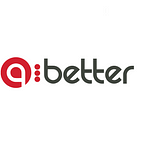What are the main applications?
Q-BETTER | Queue Management & Business Intelligence
www.q-better.com
The acronym IoT means Internet of Things. It is a digital interconnection, in which everyday objects of personal and professional life are directly connected to the internet.
The Internet of Things began to be developed in 1999 by Gevin Ashton, although it has only recently become popular.
However, the concept has already evolved beyond what was traditionally developed, from Machine to Machine, becoming advanced connections of devices, systems and services that embark on a wide variety of protocols, domains and applications.
Communication is directly related to all these dimensions of the Internet of Things since it allows communication between an object and the human being. Or, in more specific and advanced cases, between the appliance and the supermarket.
An example of such direct communication is a lack of water in the refrigerator. A purchase order is automatically generated, as well as the product delivery order. Just be authorized by the person on your smartphone.
MAIN APPLICATIONS OF “INTERNET OF THINGS”
At Home
Inside homes, this technology is presented in the broad concept of automation, which can go from the lighting system to the security system.
One of the benefits is the savings in domestic expenses, such as electricity bills. If no one is in a certain room, the IoT system will be able to turn off the light automatically, which avoids waste. The same can be said of refrigerators that, when configured, manage to inform us of the expiration date of the products and, once again, avoid waste.
Still at home, there are also Internet of Things devices capable of helping and assisting people with disabilities and the elderly. For example, via voice control, for people with visual or mobility limitations.
Another breakthrough is emergency alarms! Are there sensors and emergency systems capable of triggering paramedics in the event of seizures? There are several ideas for people with these types of health problems that need to be developed.
Transports
As for transports, the IoT can assist both private and business drivers. There are integrations of communication, control, and processing of different types of information.
An example is the digital speed limit signal. Whenever it is driving on a road, the vehicle will be able to warn what is the maximum speed allowed, as well as trigger an alert if it is exceeded.
There are also traffic control systems, both for users of public transport, and for their security and monitoring companies. Through an application installed on the smartphone, users can keep track of how many minutes are left before the bus reaches the point in question.
In private vehicles, the example is assistance in real time, in which the driver presses a button inside the car and is contacted directly. In this case, you can request assistance for a repair or directions on the way, if the smartphone battery has run out. In accidents where the airbags fire, the vehicle will send a signal to the company so that they can contact the rescue team.
Industry
In the industry, IoT presents itself through sensors and intelligent systems that assist in the control and management of assets in the most diverse areas. In certain areas, it even allows the creation of new (personalized) products and dynamic responses to market demand.
Agriculture
In agriculture, this control is mainly applied to collect information on sowing and harvests. That is, it allows you to make more informed and intelligent decisions, minimizing costs and losses.
The system can measure temperature and precipitation, humidity, and wind speed, for example. Not only the quantity, but also the quality can be monitored through the Internet of Things, with devices that warn about the incidence of possible pests.
Trade
In commerce and retail, IoT is used to guarantee the best provided services and customer satisfaction. Streamlines processes in self-service boxes, as well as the possibilities of payment via smartphone.
For example, a store where there are no employees and, when you take a product off the shelf with the smartphone connected, the amount is automatically debited from the account. If you put the product back, the value is returned.
In the hotel sector, some of the systems that can be used resemble smart homes (home automation), such as curtains, lamps, TV and even bath and shower devices. For companies, IoT is advantageous in terms of providing data collection and personalized treatment to its guests.
Labour & Careers
There are two scenarios that can be assessed in the face of the digital transformation brought about by the Internet of Things. The first concerns the ease of collecting information and transforming it into useful data for a specific sector or work equipment. The second scenario, on the other hand, concerns the replacement of operations performed by human beings with technological devices.
Although they are transformations that have an impact, they are not aimed at this replacement — but at improving certain tasks in the work environment. In general, the information becomes more reliable and assertive.
Q-Better brings IoT into the Queue Management segment.
Learn more about our new Smart Queuing system, Qube, here!
